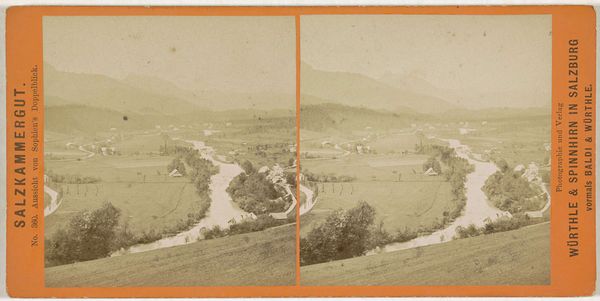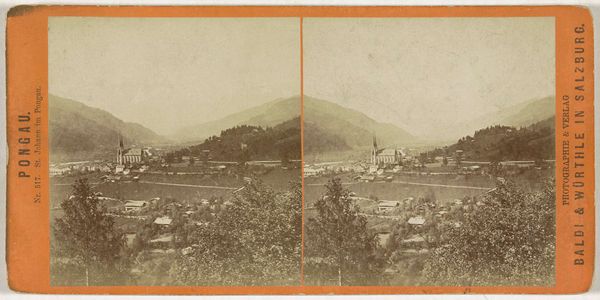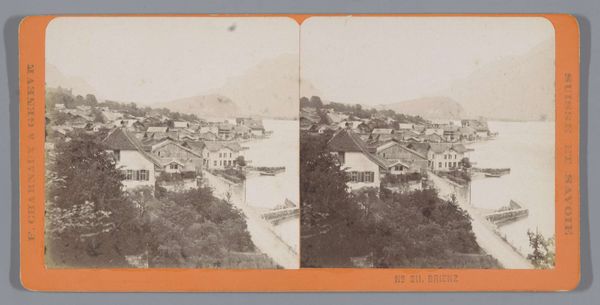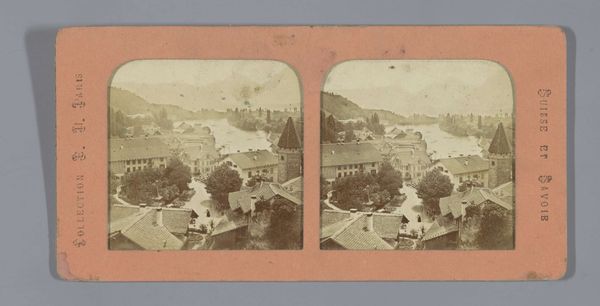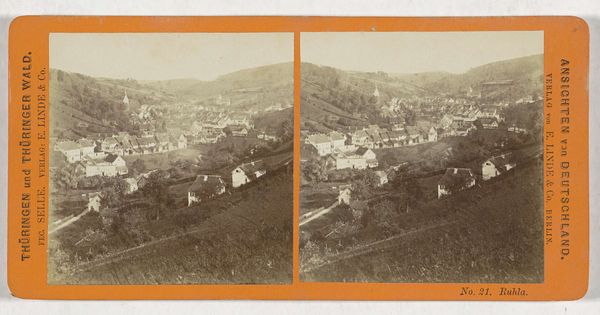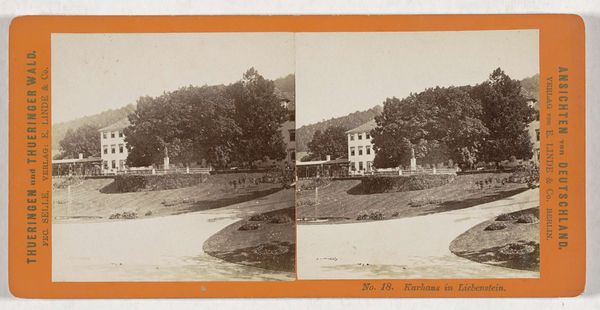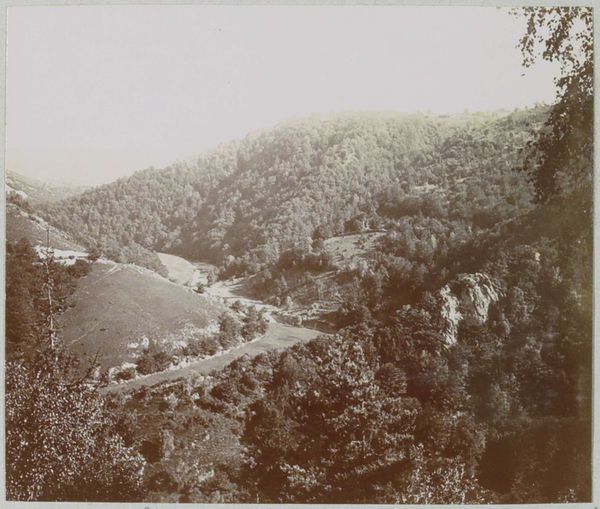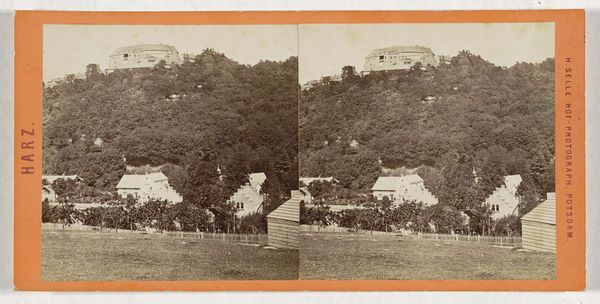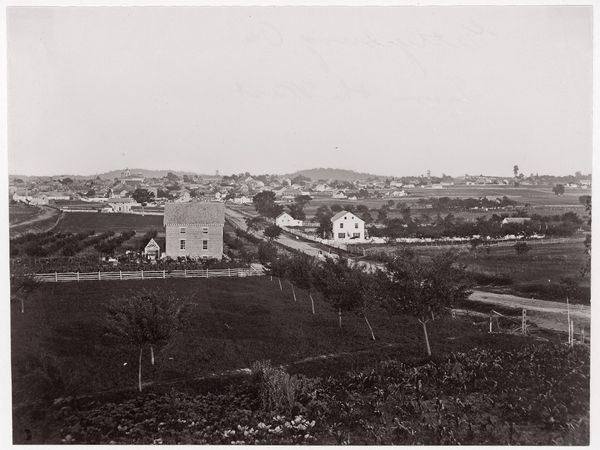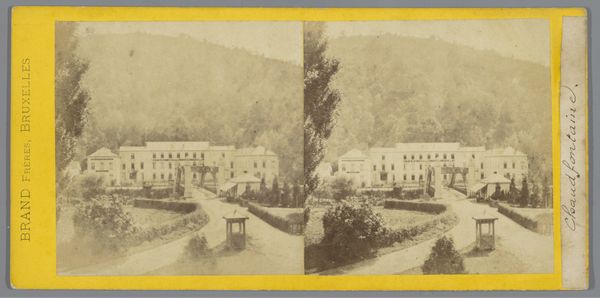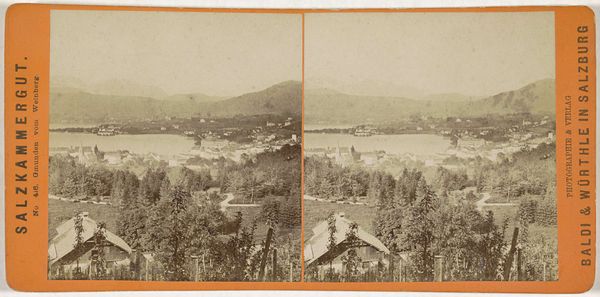
Dimensions: height 87 mm, width 177 mm
Copyright: Rijks Museum: Open Domain
Editor: We’re looking at "Gezicht op de kuurvoorzieningen van Ruhla," a photographic print made sometime between 1868 and 1890 by Hermann Selle. The monochromatic palette and soft focus create a sense of tranquility. What do you see in this work? Curator: I see more than just a tranquil landscape. This photograph exists within a historical and social framework. Consider the late 19th century. "Kuurvoorzieningen," or health resorts, were becoming popular among the bourgeoisie. This image normalizes leisure and "health" as a privilege, obscuring the socio-economic realities of who had access to such spaces. What narratives are absent? Editor: That's a great point. I was focused on the aesthetic appeal. Curator: And that's valid. But pictorialism, with its emphasis on painterly effects in photography, often romanticized the subject, sometimes masking uncomfortable truths. We need to ask, whose perspective is being presented, and whose is being left out? Does this idyllic scene reflect the lived experiences of everyone in Ruhla at that time? Editor: Probably not. It feels like it’s promoting a specific idea of wellness and place. How can we understand it better? Curator: We should investigate Ruhla's history, its industries, its class structures. This photograph, in its seemingly innocent portrayal, can actually reveal complex power dynamics and societal aspirations if we unpack its context. What do you think about that framing of the image? Editor: I think you're right, looking beyond the immediate aesthetic reveals its social implications. Curator: Exactly! It challenges us to consider the unseen forces that shape our understanding of beauty and leisure. Editor: Thanks. I learned a lot by situating it within a wider cultural understanding! Curator: And I enjoyed considering how its beauty obscures underlying power dynamics.
Comments
No comments
Be the first to comment and join the conversation on the ultimate creative platform.
